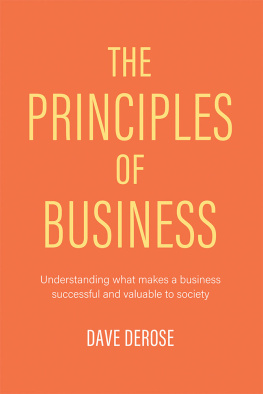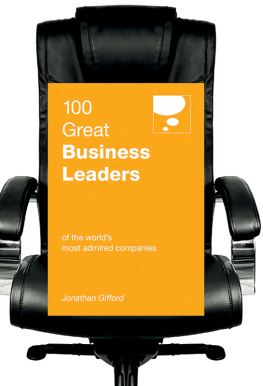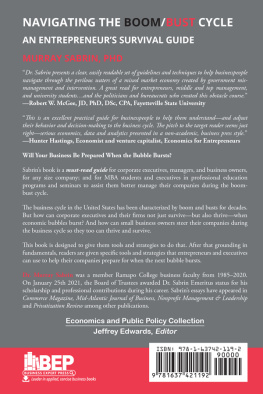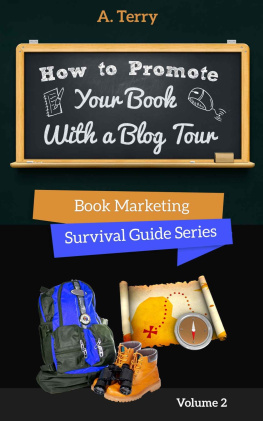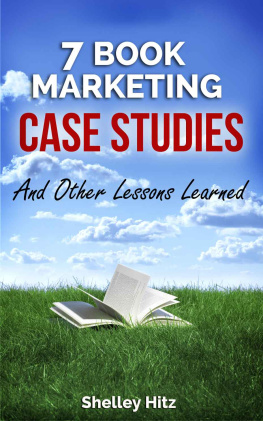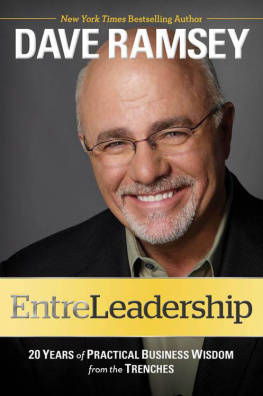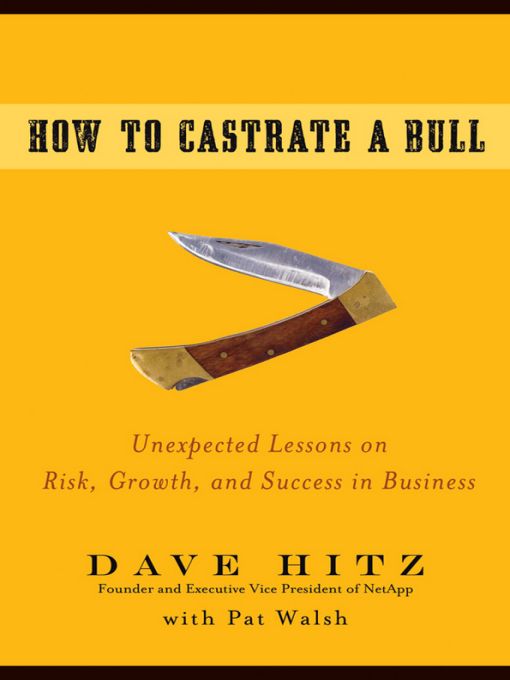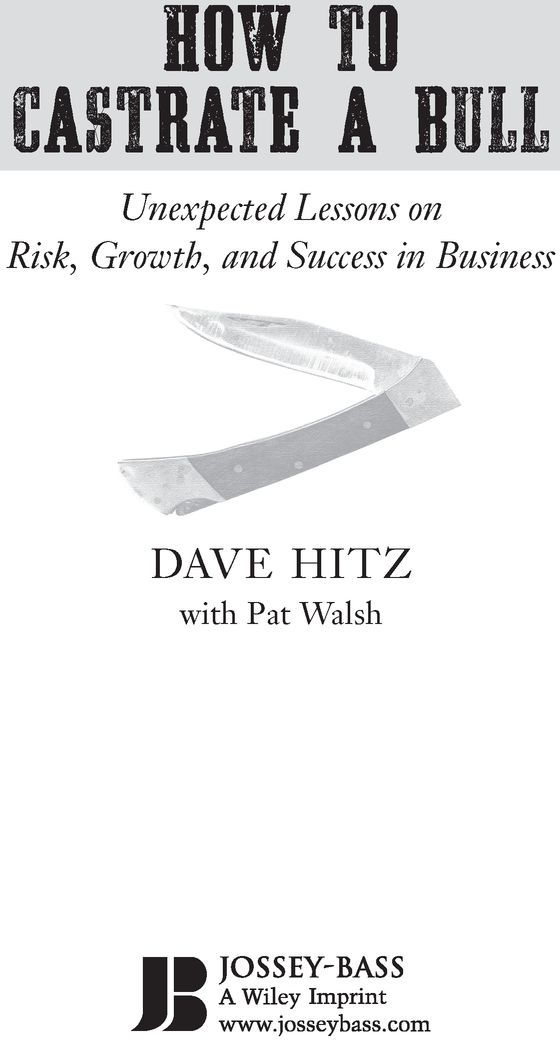Table of Contents
More Praise for How to Castrate a Bull
How to Castrate a Bull is two memoirs: one of Dave Hitz and another of the company he created. It tells of how Hitz founded and helped to grow one of the worlds greatest technology companies, playing a key role in shaping the strategy and culture of NetApp through its early growth, the technology bubble, and into the new millennium. His story illustrates how a brilliant founder can stay with a companyplaying a crucial role in keeping entrepreneurship alive even as the firm becomes huge and successful. This book tells the human side of that story, made all the more real by the memoir it records of this remarkable person. A must-read for those who delight in seeing genius in action.
Bill Barnett, Thomas M. Siebel Professor of Business Leadership, Strategy, and Organizations, Stanford University
Lots of lessons for entrepreneurs, execs, and ordinary managers from the founder of one of Silicon Valleys most successful companies. Dave Hitz peppers his tale with light-hearted anecdotes and powerful insights. Hes done an especially good job at describing how NetApp has created one of the countrys most resilient workplace cultures. Highly recommended.
Robert Levering, coauthor of Fortunes 100 Best Companies to Work For list, and cofounder of Great Place to Work Institute
NetApp may be the most successful high tech company youve never heard of. Dave Hitz is a founder and has written a book filled with insightful examples of the challenges facing any successful organization as it grows. The lessons he learned as NetApp grew from an idea on a cocktail napkin to a $4 billion company are useful to managers everywhere. Moreover, his candor and humor in telling these stories make the book a joy to read.
Charles A. OReilly III, The Frank E. Buck Professor of Management and The Hank McKinnell-Pfizer director of the Center for Leadership Development and Research, Graduate School of Business, Stanford University
CHAPTER ZERO
I am the product of a tryst in a squalid Times Square flop-house and was raised by a brothel owner and his opium-using wife. I am a high school dropout who started college at fourteen. My youth was spent hitchhiking and cutting the testicles off bulls. I sold my blood for money. I am an ordained minister and an atheist. I once ate dog meat and the still-beating heart of a snake. I made a billion dollars and I lost a billion dollars. I am presently employed as a shaman.
Or... I can say that I am the son of comfortable and educated middle-class parents. My father was an aerospace engineer while my mother took care of the three children. I went to college and studied to become an engineer like my father. I earned a computer science degree from Princeton in 1986 and headed off to Silicon Valley to write software. In 1992 I joined two colleagues to start a data storage firm called NetApp, where I still work today.
Both accounts are true. My story, like everyones, depends on the circumstance in which it is told.
This book is a memoir of a company and of a man, because both stories are intertwined. NetApp started as an idea scribbled on a placemat, became a real business, and quickly grew to a Fortune 1000 company. Our sales are about four billion dollars a year. I began as a software engineer, became a manager, and eventually developed into a businessman. In a sense, NetApp and I grew up together. Being there from the very beginning has given me an amazing tour through business. Ive seenand participated inventure capital financing, management shake-ups, hypergrowth, going public, economic disaster, strategic reversal, and recovery. Its rare for one person to survive such a volatile trip, seeing the whole thing as an insider, so Ive tried to capture my experiences and distill lessons that may be useful to other businesspeople. I also want to tell a story that non-business readers can enjoy.
NetApp sells mostly to large corporations, so it isnt a household nameeven though the company has thousands of employees, billions in revenue, and offices in over a hundred countries. Let me briefly describe what NetApp does. We sell giant boxes of disk drives to big companies that store large amounts of dataInternet e-mail, X-rays and CAT scans for hospitals, design data for new cars and computersand we help customers manage all that data. If youve flown Southwest Airlines, seen Lord of the Rings, or driven a Mercedes, then you are an indirect NetApp customer. Major banks, telephone companies, and retailers around the world use our equipment to track customer records, which covers still more people. (I try to avoid getting too technical in this book, but there are more details in Interlude: What NetApp Does after Chapter One. Theres also a glossary for when I do use jargon.)
I care more about themes and lessons than about chronology, but stories lose their meaning without a sense of time, so I divided the book into three parts: NetApps childhood, adolescence, and adulthood. Childhood is about getting started, raising money, venture capitalists, and so onplus one chapter on my own beginnings. Adolescence, in NetApps case, was a time of rapid growth in the dot-com boom, and then a sudden, painful end to rapid growth. Adulthood is about becoming a grown-up company, selling largely to other grown-up companies. The bull of the title is a metaphor for risk. In some ways, the first part is about risk, the second about growth, and the third about success, but in fact, all three themes run through all three parts, especially risk.
This is my personal journey as well. In Part One, I am a programmer, spokesman, and company gadfly. In Part Two, I am a vice president with a $100 million budget and a staff of hundreds. In Part Three, I have no direct reports but influence NetApps strategic direction by trying to predict the future.
There is more than one way to tell a story; however, this book is the best way I know to relate not just what Ive learned butmore importanthow I learned it. Lets start with my first business lesson ever:
Dont listen to my mother.
PART ONE
BEGINNINGS
BEFORE NETAPP
On Computers, Colleges, Castration, and Risk
My good fortune to be involved in technology came from not listening to my mother. When I was young, a family friend taught me the rudiments of programming, and I loved it. I read early computer hobby magazines like BYTE and Dr. Dobbs Journal. At fourteen, I bought a build-it-yourself mail-order computer called an IMSAI 8080. It had binary toggle switches on the front and little flashing lights. I programmed the lights to go back and forth. A television set was the display, and an audiocassette tape recorder was my first storage system ever. This was in 1977, right at the dawn of the personal computing era.
My mother seemed to feel that working with computers was not a serious profession. Perhaps she saw a matchbook cover that read, You, too, can learn computer repair! with a picture of some guy fussing with vacuum tubes and his butt crack hanging out. She made her opinion clear: computers were fine as a hobby, like ham radio, but you would never make that your career.


